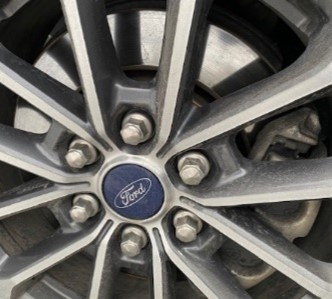Vermont Periodic Inspection Manual (VPIM) / DMV Rule - CVR 14-050-022
In 2019, the Vermont Periodic Inspection Manual (VPIM) was amended. Since that time, concerns have been raised regarding the definition of rust. This memo will provide clarification.
Act 165 - An act relating to miscellaneous changes to laws related to vehicles: Sec. 17 - Requires DMV to issue a bulletin to inspection stations clarifying pass/fail criteria for rust on a rotor. You can view this Act on the Legislative website: https://legislature.vermont.gov/
Rust is NOW defined “as a condition of any swelling, delamination, or pitting.”
Surface rust should wear off with normal driving use. If surface rust does not come off, there is a problem with the braking system and/or, there may be more than just surface rust on the rotor.
Here are samples of rotors with “surface rust” that would not constitute a rejection:
 |
 |
| Picture 1 |
Picture 2 |
 |
Customer Information
Rust: Rotor rust as defined in the Vt Periodic Inspection Manual (VPIM) will compromise braking efficiency and safety.
Rust is developed from moisture (rain, snow, mud, other), inactivity and/or by salty winter roads. Vehicle age and miles are not necessarily a factor.
Your rotor should have a smooth shiny surface where the pad affixes to the rotor. Rust inhibits the brake pads from gaining a proper grip and/or dispersing heat effectively. If orange with surface rust, it should rub off with normal use.
Swelling, delamination and pitting on the contact surface (where the brake pad strikes the rotor) reduces the friction required to stop a vehicle in an emergency/panic braking situation. This is directly related to the brakes’ effectiveness and ability to stop as designed.
Swelling decreases braking efficiency due to uneven surfaces created by rust and will likely result in your vehicle taking longer to stop.
Prevention: Surface rust will build over time, developing into more harmful rust that will affect your brake rotors and other braking components. Friction from regular brake use will wear surface rust off and slow down the delamination process.
Protect your brakes from rust by simply using your brakes, wash the undercarriage of your vehicle regularly (remove salt), and apply brake cleaner as needed. Lack of use or inactivity will allow rust to build.
Electric vehicles require less brake use than that of a vehicle with a combustible engine. Make sure to use the brakes, and keep the rotors clear of surface rust that will build over time from inactivity and keep the rotors free of corrosive salt.
Rust not only affects pads/rotors, but may also cause the calipers to seize, brake lines to fail and possibly inhibit the ABS system from properly activating.
*** “Surface rust” is not grounds for rejection. ***
Should you or your customers have any concerns regarding this criterion, please contact the DMV Enforcement and Safety Division at (802) 828-2067 or visit the DMV website to locate a DMV Inspector near you. DMV Inspector Map | Department of Motor Vehicles (vermont.gov)
